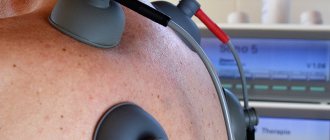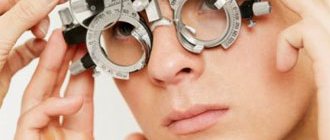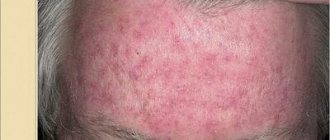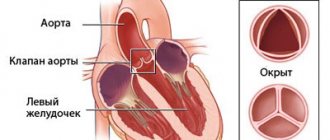Arrhythmia is a disturbance in the normal rate or sequence of heartbeats.
The concept of arrhythmia combines various types of heart rhythm disturbances. For a person aged 20 to 60 years, the average heart rate is 60-80 beats per minute. Contractions of the heart muscle follow each other at almost equal intervals of time. This is the norm. A person gets used to the way his heart beats and does not notice the heartbeat. If the heart rhythm is disturbed, it immediately attracts our attention.
However, arrhythmia is not just a complaint about the feeling of heartbeat. Arrhythmia is established objectively, using instrumental diagnostic tools. Arrhythmia can be detected in the absence of any complaints, and vice versa: complaints of cardiac arrhythmias may not be confirmed instrumentally.
Arrhythmia occurs one and a half times more often in men than in women. Another factor that increases the risk of arrhythmia is age. At 50 years of age, arrhythmia is detected in 1% of subjects, at 60 years of age – already in 10%. However, it can also develop in childhood. Arrhythmia is detected in 0.8% of children.
Types of arrhythmia
The most common types of arrhythmia are:
- sinus tachycardia . Tachycardia is an increased heart rate. The sinus is the main node of the myocardial conduction system. It is the disruption of its functioning that causes sinus tachycardia. The heart rate increases to 120-150 beats per minute. Sinus tachycardia can be physiological - caused by a reason not related to diseases (physical activity, overheating, emotional experiences). In this case, after the cessation of the cause that caused the tachycardia, the normal heartbeat should be restored. If tachycardia is not associated with such conditions, then it is most likely of a pathological nature;
- bradycardia - slow heart rate (heart rate less than 60 beats per minute);
- paroxysmal tachycardia . Paroxysmal tachycardia is characterized by a paroxysmal increase in heart rate to 140-200 beats per minute. The attack begins and ends suddenly. With the onset of an attack, you must take a horizontal position and call an ambulance;
- atrial fibrillation is a disordered contraction of the heart. With atrial fibrillation, the heart does not contract as a single whole; individual groups of atrial muscle fibers contract uncoordinated and chaotically. As a result, the heart rate can fluctuate between 40 and 500 beats per minute. An attack of atrial fibrillation may precede a stroke, therefore, if such an attack is observed for the first time, urgent hospitalization is necessary.
Cardiac arrhythmia - what is it and how to treat it? Make an appointment with a cardiologist at MEDSI Clinic
Table of contents
- Causes
- Classification
- Symptoms
- Arrhythmia during pregnancy
- Diagnostics
- Treatment
- Drug treatment of cardiac arrhythmia
- Cardiac arrhythmia: treatment with surgery
- Consequences
- Prevention
- Forecast
- Advantages of treatment at MEDSI
Cardiac arrhythmia
is a pathology associated with disturbances in the rhythm, frequency and sequence of heart contractions. The disease can be a consequence of both diseases of the heart itself and disturbances in the functioning of other organs and systems. Malfunctions of the heart are very dangerous, as they can cause both serious health problems and death of the patient. That is why treatment of arrhythmia should begin as early as possible, when the first attack occurs. You should not think that it is a one-off and will never happen again!
Causes
To the main causes of arrhythmia
heart problems include functional dysregulation and anatomical changes. Very often, rhythm disturbances are a sign of illness.
Arrhythmia can be provoked
:
- Coronary heart disease
- Injuries
- Surgical interventions
- Heart defects
- Myocarditis, etc.
There are also third-party (non-cardiac) factors that can cause rhythm disturbances.
These include:
- Addiction to drinks and foods containing large doses of caffeine
- Energy drink craze
- Excessive alcohol consumption
- Frequent smoking
- Stress
- Metabolic disorders
- Fungal infections
- Excessive exercise
- Infections
- Climax
- Brain pathologies
In most cases, the causes of cardiac arrhythmia are quickly identified, allowing treatment to begin immediately. In some situations, it is impossible to identify factors contributing to the development of pathology. Such conditions are called idiopathic.
Classification
Today, experts have identified several types of arrhythmias:
- Sinus tachycardia.
With this pathology, the heart rate is more than 90 beats per minute. The patient experiences unpleasant sensations; he literally feels how hard his heart is beating. Some call this condition “the heart is jumping out of the chest” - Sinus arrhythmia
. With this pathology, heart contractions alternate incorrectly. Typically this form of the disease is diagnosed in children and adolescents - Sinus bradycardia
. This pathology is characterized by a pulse rate of less than 55 beats per minute and can occur even in completely healthy people during sleep or rest. - Atrial fibrillation
. This pathology is characterized by a regular rhythm with a very rapid (up to 240 beats per minute) heartbeat. Patients suffer from weakness and increased sweating. Some patients become faint during an attack - Paroxysmal tachycardia
. With this pathology, the heart rate increases (up to 140-220 beats per minute). The attack begins suddenly and ends just as quickly - Extrasystole
. This pathology is characterized by premature contractions of the heart. During an attack, the patient feels freezing or tremors of the heart muscle
Symptoms
Symptoms of arrhythmia largely depend on its type and are determined by the rhythm and frequency of the heart.
To the main features
pathological conditions include:
- Feeling of heart failure
- Increased heart rate
- Weakness
- Dizziness
In some cases, attacks are accompanied by suffocation, fainting and general discomfort.
Important! In some cases, “silent” arrhythmias are diagnosed. With this pathology, the patient does not experience any symptoms. The disease is discovered accidentally, usually during an ECG examination during medical examination or diagnosis of other pathological conditions.
Arrhythmia during pregnancy
Pregnancy is a special state of the body, which is characterized by various changes in the functioning of both individual organs and entire systems. While carrying a child, a woman may experience heart rhythm disturbances. Almost 20% of pregnant women, for example, experience tachycardia and extrasystole. At the same time, we cannot talk about heart pathologies.
If you suffer from a disease, but still want to become a mother, you should:
- Strictly follow all doctor's recommendations
- Maintain a rest and work schedule
- Take all prescribed medications
- Receive inpatient therapy in a timely manner
Childbirth in women with arrhythmia usually takes place in specialized departments, where immediate assistance can be provided for cardiac pathologies.
Diagnostics
Diagnosis of cardiac arrhythmia, as well as treatment, is always carried out comprehensively.
The examination includes:
- Audition at the first appointment
- Taking an ECG
- Taking blood and urine tests
The initial examination allows us to determine the heart rhythm, the sequence and frequency of heart contractions, the general health of the patient, and the presence of factors that could trigger the development of the pathological condition.
If arrhythmia occurs spontaneously and does not depend on activity and time of day, Holter monitoring is performed. This technique involves recording the heartbeat around the clock using special equipment. Studies are also carried out under load (on a treadmill or other exercise machine).
To clarify the diagnosis and identify the causes of the pathology, other studies may be carried out.
These include:
- Ultrasound of the heart
- Dopplerography of blood vessels
- Echocardiography, etc.
If necessary, the patient is referred for consultation to other specialists (endocrinologist, gynecologist, etc.).
Treatment
Treatment of cardiac arrhythmia is always carried out in accordance with:
- The cause of the pathology
- A form of rhythm disturbance
- General condition of the patient
- Identified concomitant pathologies
In some cases, it is very important to correct the underlying disease. Only after this can therapy be carried out directly.
Drug treatment of cardiac arrhythmia
Therapy is carried out using drugs such as:
- Calcium and sodium channel blockers
- Beta blockers
- Vitamin complexes
- Means to improve the functioning of the entire cardiovascular system
Important! It is strictly forbidden to attempt therapy on your own! Arrhythmia, which is treated at home, can cause serious complications and even cause the death of the patient.
Cardiac arrhythmia: treatment with surgery
Operations are performed in cases where medication methods do not give the desired result, and in cases of pronounced changes in the functioning of the heart.
Today can be held:
- Cardiac pacing, which involves applying an electric current to the heart muscle
- Implantation of a special device to regulate heart rate
- Catheter ablation, in which sources of false impulses are cauterized and the heartbeat is normalized
Important! Treatment of cardiac arrhythmia, regardless of the cause, is carried out only by a cardiologist. Even standard medications are often selected under the supervision of a specialist. In severe cases, the selection of medications is carried out in a hospital setting. The patient's condition is constantly monitored, and numerous examinations are carried out regularly. This allows you to prevent deterioration in health and the occurrence of complications, and significantly reduces the risk of death of the patient.
Consequences
Any arrhythmia can be complicated by pathological conditions such as ventricular flutter and fibrillation
. These conditions are equivalent in severity to circulatory arrest and can lead to the death of the patient. In the very first seconds of the attack, weakness develops, and the patient experiences dizziness. Then he loses consciousness and convulsions occur. During an attack, breathing stops, and pulse and blood pressure are not recorded. Clinical death occurs. If resuscitation is not performed, the patient will die.
Complications of arrhythmia are especially dangerous for patients with chronic circulatory failure
. During an attack, the patient experiences shortness of breath and may develop pulmonary edema.
Thromboembolic complications are also common
associated with blockage of important arteries. Such conditions lead to cerebral stroke.
Prevention
To prevent arrhythmia it is necessary:
- Do regular morning exercises or simple sets of exercises throughout the day
- Stick to a proper diet. It is important to saturate the body with the full range of nutrients and eat a nutritious and varied diet. At the same time, you should avoid fried, salted and smoked foods, which place additional stress on the body.
- Maintain a normal weight
- Monitor your blood pressure levels
- To refuse from bad habits
- Track sugar levels
- Lead a calm lifestyle, avoiding stress
- Maintain a work and rest schedule
It is very important to regularly consult a doctor and undergo at least a minimal examination to determine the general condition of the body and existing risk factors for the development of pathological issues.
When the first signs of arrhythmia appear, you need to make an appointment with a cardiologist.
Forecast
Arrhythmias not associated with organic cardiac pathologies are not a threat to the health and life of the patient. The prognosis for them is always favorable. The patient can live with this form of the disease, often without even noticing it (if he follows all the doctor’s recommendations). Atrial fibrillation and a number of other forms are dangerous because they can provoke severe pathologies, including not only heart failure, but also stroke. Atrial flutter and ventricular fibrillation pose an immediate threat to life. The prognosis for such pathologies is the most unfavorable. In numerous cases, without proper medical supervision, the patient dies.
Advantages of treatment at MEDSI
- Qualified specialists. Our doctors (not only cardiologists) regularly undergo training and study new methods of treating arrhythmias
- Possibilities for quick diagnostics. We have our own laboratory, where test results can be obtained in CITO (urgent) mode. We also have modern equipment for instrumental diagnostics
- Opportunities for drug therapy and surgical interventions. Our specialists are ready to select means to stabilize the heart, allowing you to avoid relapses of the disease and complications. Our clinics also have operating rooms for performing endovascular interventions and installing pacemakers and defibrillators
- Using only proven methods and drugs. Treatment of arrhythmia in Moscow in our clinics is carried out using products that meet international standards and have proven their effectiveness
- Attentive attitude towards all patients
- Individual approach
- Comfortable atmosphere in clinics
To make an appointment with a cardiologist, just call +7 (495) 7-800-500. We will schedule you to see a specialist at a convenient time. You don't have to wait in line!
Causes of arrhythmia
The heart has the property of automaticity. It contracts under the influence of impulses that are generated in the heart itself. The myocardial conduction system, formed by nodes of nervous tissue, is responsible for the generation and conduction of impulses. Disturbances in the functioning of this system lead to abnormal heart rhythm.
Cardiovascular diseases can cause arrhythmia:
- coronary heart disease (poor circulation of the heart muscle);
- previous myocardial infarction. In 15% of cases, a complication such as post-infarction aneurysm is observed - protrusion of the wall of the heart ventricle. The aneurysmal segment does not participate in contraction, which leads to arrhythmia;
- cardiomyopathies (changes in the size and shape of the heart), as well as congenital and acquired heart defects;
- myocarditis (inflammatory diseases of the heart muscle);
- arterial hypertension.
In addition, arrhythmia can be caused by:
- vegetative-vascular dystonia;
- disturbance of the electrolyte balance of the body (as a result of acute lack of magnesium, as well as deficiency or excess of potassium and calcium);
- smoking, alcohol abuse, poisoning;
- stress;
- physical activity;
- febrile conditions in infectious diseases;
- endocrine disorders. In particular, arrhythmia can be observed during menopause.
How to notice the first signs of abnormal heart function
At first glance, it seems that it is impossible not to notice the development of cardiac pathology. But in reality, arrhythmia is often asymptomatic. The person continues to feel healthy, and if occasional attacks occur, he attributes them to overwork.
The pathological condition is accompanied by the following manifestations:
- changes in heart rate for no particular reason;
- chest tightness, pain;
- nausea, dizziness;
- loss of consciousness.
People experience these symptoms differently. For some, this is a reason to stay in bed, while others do not pay attention to poor health and risk their lives.
The presence of arrhythmia is easily confirmed by hardware diagnostics. If a doctor suspects a patient has this disease, he may prescribe a chest ultrasound, echocardiography, or electrocardiography.
Arrhythmia comes in different types. Modern medicine knows the following subtypes:
- atrial fibrillation (heart contractions are chaotic);
- paroxysmal tachycardia (pulse is regular, but very frequent - up to 240 beats/min);
- blockade (the pulse temporarily or completely disappears);
- extrasystole (out of sequence of contractions, which leads to an increase or fading of the rhythm);
- respiratory arrhythmia (blood pulses alternate incorrectly, this happens in adolescents or even children).
The most dangerous condition is considered to be erratic heartbeats. They are often accompanied by hoarse breathing, convulsions, and loss of consciousness.
Methods for diagnosing arrhythmia
To diagnose arrhythmia, the following are used:
ECG
An ECG is a simple and informative study that allows the doctor to obtain the necessary information about the rhythm of the heart muscle. The electrocardiogram shows whether there is an arrhythmia or not, and if there is, an ECG will determine the type of arrhythmia.
More information about the diagnostic method
Holter monitoring
Holter monitoring is used to diagnose arrhythmia and monitor the progress of its treatment. A device is attached to the patient’s body that records heart activity throughout the day. At the same time, the person leads his usual lifestyle (the only thing is that the device cannot be wet). The monitoring results are then processed on a computer. This method makes it possible to identify episodes of arrhythmia caused by habitual daily exercise - this does not require being seen by a doctor at that very moment.
Echocardiography
Echocardiography for arrhythmia is carried out to identify functional and morphological changes in the heart.
More information about the diagnostic method
Treadmill test
A treadmill test is an electrocardiographic study that is performed during physical activity on a special treadmill (treadmill). Such a functional test allows you to identify heart rhythm disturbances, which usually appear only during increased stress and are absent at rest.
More information about the diagnostic method
Sign up for diagnostics To accurately diagnose the disease, make an appointment with specialists from the Family Doctor network.
Bibliography
- Guzovskaya, E.V. Pathophysiology of the heart: textbook/ / E.V. Guzovskaya, S.F. Nepomnyashchy; GBOU VPO IGMU of the Ministry of Health of Russia - Irkutsk, IGMU - 48 p.
- Zatonskaya, E.V. Epidemiology of arrhythmias (review of literature data)/ E.V. Zatonskaya, G.V. Matyushin, N.G. Gogolashvili, N.N. Novgorodtseva - Text: direct // Siberian Medical Review, 2021.- No. 3.- P.5-16.
- Sozonov, A.V. The role of a single-channel electrocardiogram at home in the diagnosis of heart rhythm disorders in children / A.V. Sozonov, Yu.A. Trunova, O.S. Pokusaeva-text: direct // Russian Journal of Cardiology, 2021.-No. 24 (add.) – P. 18-19.
- Hingorani P., Natekar M., Deshmukh S., Karnad DR, Kothari S., Narula D., Lokhandwala Y. Morphological abnormalities in baseline ECGs in healthy normal volunteers participating in phase I studies // Indian. J. Med. Res. - 2012. - Vol. 135. - P. 322-330.
Author:
Pugonina Tatyana Alekseevna, Therapist
Treatment methods for arrhythmia
Treatment of arrhythmia depends on its type, the cause of the arrhythmia, and the individual condition of the patient.
For any arrhythmia, actions aimed at normalizing lifestyle and general health are useful, including proper nutrition, healthy sleep, quitting smoking and other bad habits, dosed physical activity, such as therapeutic walking, swimming, cycling.
Drug treatment
The basis of drug treatment is antiarrhythmic drugs. In some cases, the doctor may decide that drug treatment is not required. Under no circumstances should you use medications at your own discretion, without consulting a doctor.
Specialist consultation
To treat arrhythmia, you should contact a cardiologist. Cardiologists at Family Doctor JSC have extensive experience in diagnosing and treating arrhythmias. If you need an in-depth examination of the condition of your heart, contact the high-tech divisions of our network - the Rehabilitation Center (Polyclinic No. 5) and the Hospital Center.
Make an appointment Do not self-medicate. Contact our specialists who will correctly diagnose and prescribe treatment.
Rate how useful the material was
thank you for rating
Possible complications and prognosis
First of all, the prognosis of the disease depends on the type of arrhythmia. If the rhythm disturbance is not associated with organic damage to the heart, then it may not cause any particular harm to health. For example, such arrhythmias include supraventricular extrasystoles.
However, there are also very dangerous types of arrhythmias. One of them is atrial fibrillation, which can cause myocardial infarction and heart failure.
First aid for an arrhythmia attack
If an attack of arrhythmia occurs, it is important not to get lost and strictly follow the recommendations received from the doctor. First of all you need to:
- Measure blood pressure and assess pulse.
- Take the medication prescribed by your cardiologist.
- Open a window to allow fresh air into the room.
- Loosen your tie, collar, or remove jewelry from your neck that is obstructing your breathing.
- Lie down on the bed and try to remain absolutely calm (you can additionally take a herbal sedative).
- Wait a quarter of an hour. If your health remains persistently poor, you should immediately call an ambulance.
During an attack of arrhythmia it is prohibited:
- take a contrast shower or bath;
- do physical work;
- take unknown medications.
Symptoms
Arrhythmia can occur in different forms and be provoked by a huge number of different diseases, which determines the nature of the changes that occur in a person’s well-being. Common manifestations of all types of arrhythmia are:
- a feeling of interruptions in the work of the heart;
- discomfort in the left side of the chest;
- changes in heart rate;
- weakness;
- coldness in hands and feet;
- hot flashes;
- increased anxiety;
- the emergence of fear.
In advanced conditions, chest pain, presyncope and fainting are often observed. Often, additional paleness of the skin and surges in blood pressure are observed.










